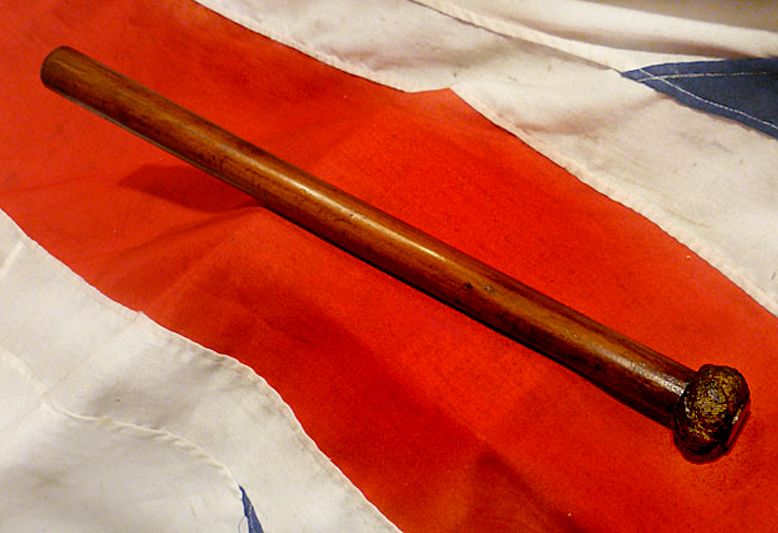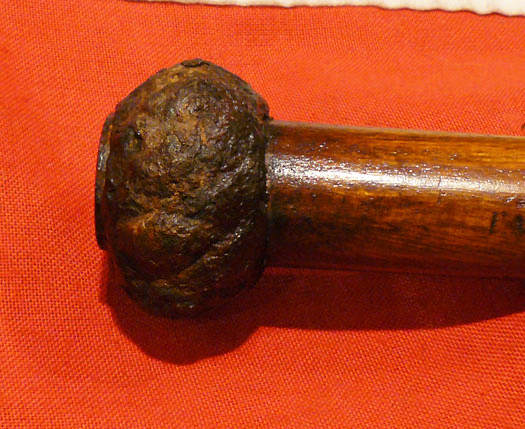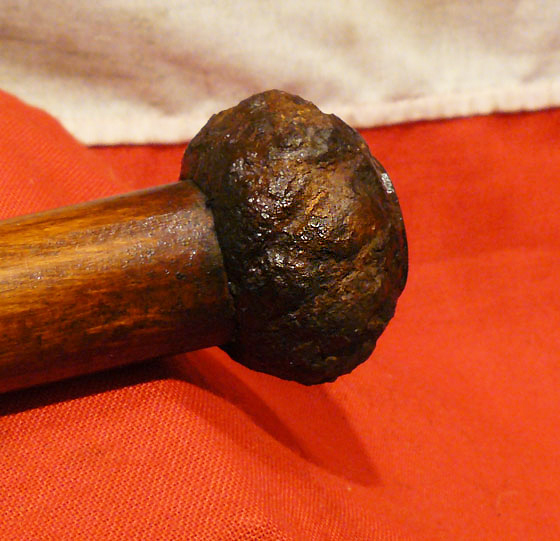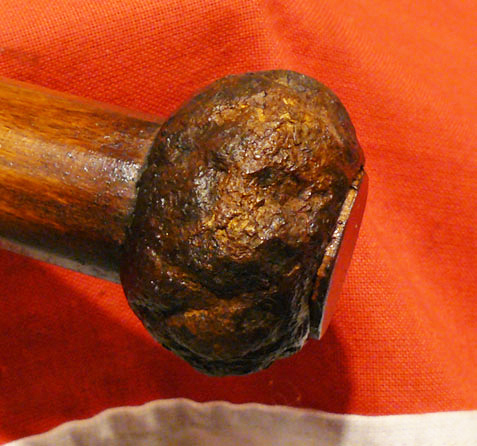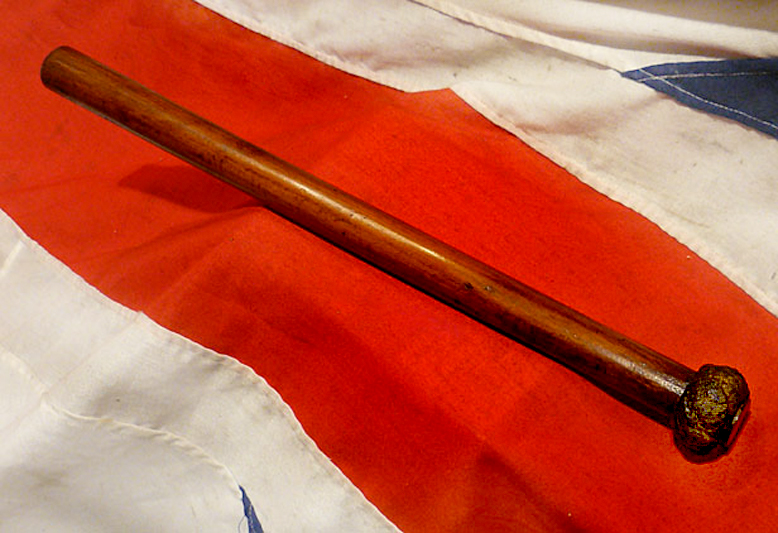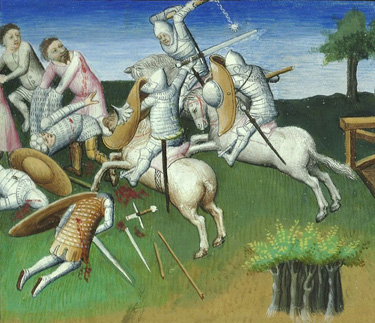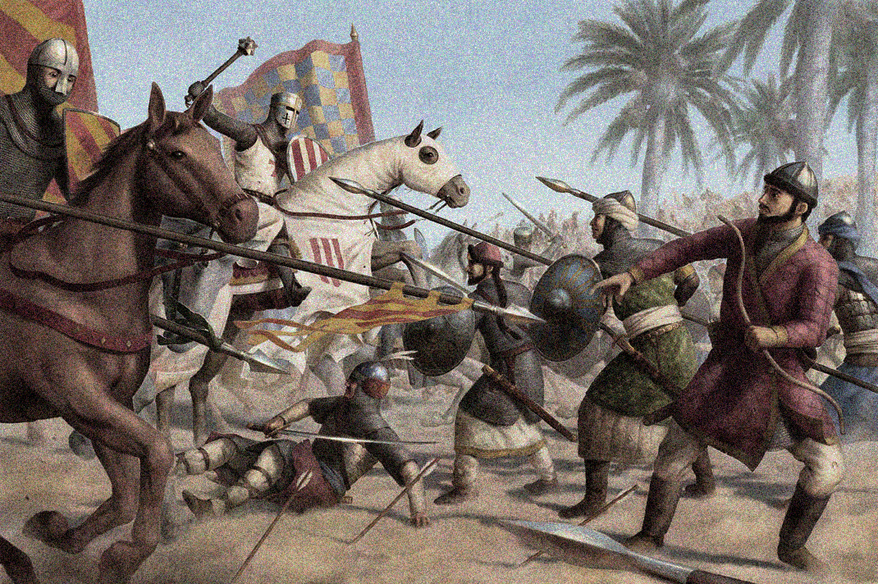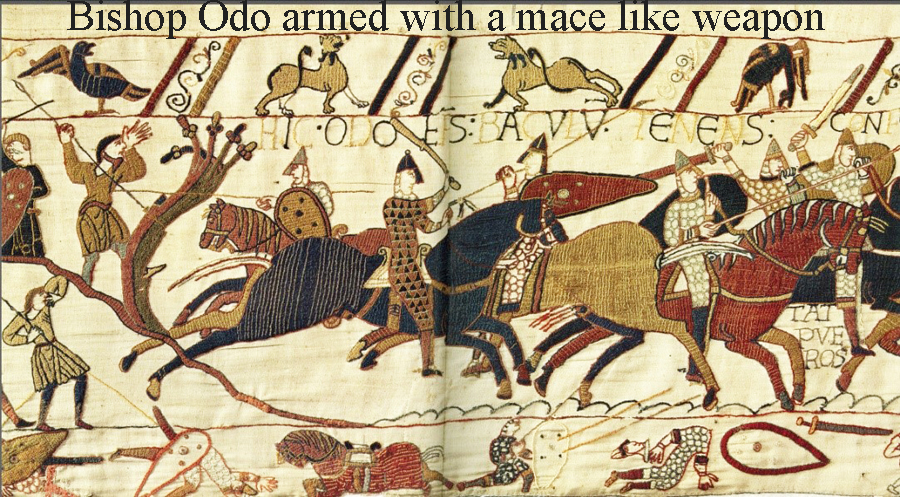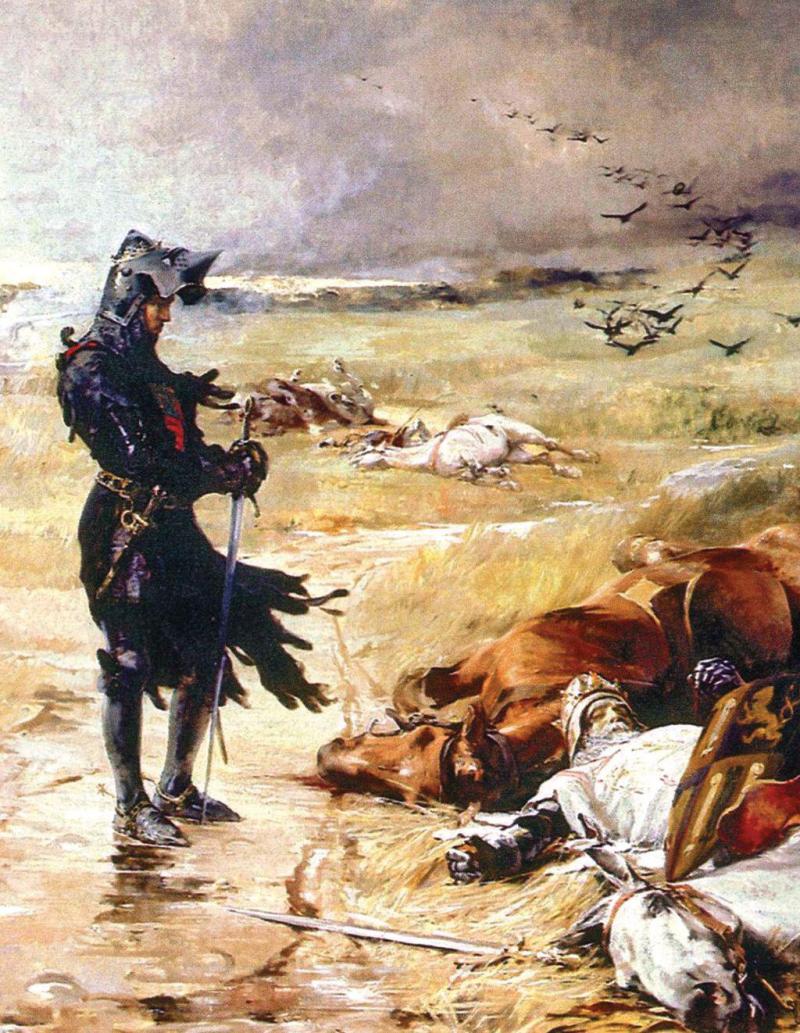A 13th Century Iron Head, Crusader Knight's Battle Mace, 800 Years Old, Mounted Upon A Later Museum's Display Haft
Pineapple shaped lobes on circular head with large mounting hole through which the haft slots. it was fitted to a plain wood haft for a museum display, as its original rotted away centuries ago as usual, in order to show how it looked and was used 800 years ago.
This type of mace head were also used as a Flail Mace, by filling out the hollow iron head with lead and a chain mounted hook placed within it, a chain would then be added to the end of a similar but shorter wooden haft. This subsequent mace head weapon could thus then became a flail, often called a scorpion at the time.
This very fine and rare iron mace head has flattened pyramidal protuberances, and is possibly English. Made for a mounted Knight to use as an armour and helmet crusher in hand to hand mortal combat upon his war horse, or then for use dismounted.
It would have been used for several hundred years, up to the 15th to 16th century.
Used as a flail it had the sobriquet of a Scorpion in England or France, or sometimes a Battle-Whip. It was also wryly known as a 'Holy Water Sprinkler'.
King John The Ist of Bohemia used exactly such a weapon, as he was blind, and the act of 'Flailing the Mace' meant lack of site was no huge disadvantage in close combat. Although blind he was a valiant and the bravest of the Warrior Kings, who perished at the Battle of Crecy against the English in 1346. On the day he was slain he instructed his Knights both friends and companions to lead him to the very centre of battle, so he may strike at least one blow against his enemies. His Knights tied their horses to his, so the King would not be separated from them in the press, and they rode together into the thick of battle, where King John managed to strike not one but at least four noble blows. The following day of the battle, the horses and the fallen knights were found all about the body of their most noble King, all still tied to his steed. In fact so noble were his actions regarded, it is said his banner of three erect and standing feathers became the symbol of the then Prince of Wales, Edward, the Black Prince, and as such, is still used by the current Prince of Wales today.
During the Middle Ages metal armour such as mail protected against the blows of edged weapons. Solid metal maces and war hammers proved able to inflict damage on well armoured knights, as the force of a blow from a mace is great enough to cause damage without penetrating the armour. Though iron became increasingly common, copper and bronze were also used, especially in iron-deficient areas.
It is popularly believed that maces were employed by the clergy in warfare to avoid shedding blood (sine effusione sanguinis). The evidence for this is sparse and appears to derive almost entirely from the depiction of Bishop Odo of Bayeux wielding a club-like mace at the Battle of Hastings in the Bayeux Tapestry, the idea being that he did so to avoid either shedding blood or bearing the arms of war. One of the Crusades this type of mace may have been used was the Crusade of 1239, which was in territorial terms the most successful crusade since the First. Called by Pope Gregory IX, the Barons' Crusade broadly spanned from 1234-1241 and embodied the highest point of papal endeavour "to make crusading a universal Christian undertaking." Gregory called for a crusade in France, England, and Hungary with different degrees of success. Although the crusaders did not achieve any glorious military victories, they used diplomacy to successfully play the two warring factions of the Muslim Ayyubid dynasty (As-Salih Ismail in Damascus and As-Salih Ayyub in Egypt) against one another for even more concessions than Frederick II gained during the more well-known Sixth Crusade. For a few years, the Barons' Crusade returned the Kingdom of Jerusalem to its largest size since 1187.
This crusade to the Holy Land is sometimes discussed as two separate crusades: that of King Theobald I of Navarre, which began in 1239; and, the separate host of crusaders under the leadership of Richard of Cornwall, which arrived after Theobald departed in 1240. Additionally, the Barons' Crusade is often described in tandem with Baldwin of Courtenay's concurrent trip to Constantinople and capture of Tzurulum with a separate, smaller force of crusaders. This is because Gregory IX briefly attempted to redirect the target his new crusade from liberating the Holy Land from Muslims to protecting the Latin Empire of Constantinople from heretical Christians.
Despite relatively plentiful primary sources, scholarship until recently has been limited, due at least in part to the lack of major military engagements. Although Gregory IX went further than any other pope to create an ideal of Christian unity in the process of organizing the crusade, in practice the crusade's divided leadership did not reveal a unified Christian action or identity in response to taking a cross. Approx. 2.5 inch wide lobed iron head.
Painting in the gallery by Julian Russel Story of the Black Prince at the battle of Crecy. At his feet lies the body of the dead King John of Bohemia painted in 1888.
Code: 21534
1250.00 GBP

